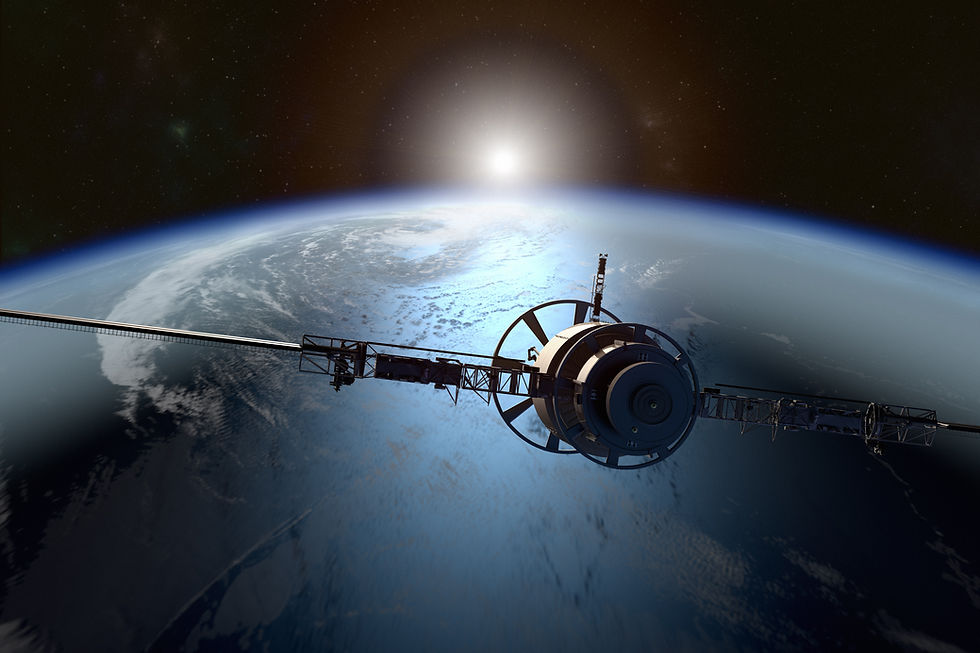7 initiatives amplifying the environmentally sustainable way of living
- Teenspire Global

- Mar 3, 2021
- 4 min read

Climate change and sustainability
Despite all the advances we’ve made in technology, proactive policy making, several green initiatives and numerous pledges, we are losing the fight against climate change. Our current efforts to lead to an environmentally sustainable life isn’t enough. If we don’t rise against it, we might cause irreversible damage to the earth. We must understand that the earth isn’t for you and me, rather it is for everyone to live in harmony. However, a few initiatives might have just begun our long yet fruitful journey towards an environmentally sustainable way of living. Let’s read the below to find out what some of those initiatives or ideas are.
1. Aircarbon (A sustainable alternative to plastic) - Aircarbon entirely consists of carbon emissions which is released into the air, causing ecological damage to our planet. But if used correctly, can have multitude of uses. Since it is a carbon negative material, its use and production are fully green and sustainable. Unlike plastics or other synthetic material aircarbon doesn’t require the use of petrochemicals. This makes it cheaper to produce and an effective alternative to non-biodegradable material.
2. Solar glass - We are still yet to realise the full potential of solar energy on earth, although we discovered it a few decades ago. However, with solar glass the way we perceive solar as just an alternative source of energy might change. As the name suggests, solar glass can capture and store energy, if fitted on residential and commercial buildings. According to experts working on this, 5 to 7 billion square meters of usable window space exists, enough to power a full 40% of US energy needs using solar glass.
3. Demetra - Reports by the Food and Agriculture Organization of the United Nations indicate that approximately one-third of the world's food is being wasted, which is equivalent to about 1.3 billion tons of food annually [17]. Demetra helps fruits and vegetables stay fresh and also extend its shelf by slowing down the ripening process. Demetra is a natural treatment for food preservation. It is made organically only by using plant extracts. Another great feature of demetra is it discards the need for fruits and vegetables to be kept in cold storages while being transported or stored. Thereby reducing GHG emissions to a great extent.
4. The Seabin project - There are 5.25 trillion pieces of plastic waste estimated to be in our oceans. 269,000 tons float, 4 billion microfibers per km² dwell below the surface [18]. 70% of our debris sinks into the ocean's ecosystem, 15% floats, and 15% lands on our beaches. Started by two surfers, Andrew Turton and Pete Ceglinski, the Seabin project aims at cleaning up oceans safely through trash bins without disrupting marine life. The Seabin can easily filter out pollutants such as plastics, detergents and oil before allowing clean water to flow back out. The Seabin also features a submersible water pump which sucks water through the bin and passes it out once it’s clean. What’s more is that the Seabin features a catch bag to filter floating pollutants and needs to be emptied only once a month. This project might just be the start when it comes to reducing ocean pollution and preserving marine life.
5. Eka 1 & 2 seeds - In Indonesia, industrial oil palm plantations have caused 47% of the deforestation since the year 2000. However, the Eka 1 & 2 seeds might just be the beginning of the end of rainforest deforestation for palm oil. Plants grown from the Eka 1 & 2 seeds can grow as much as 3 times the amount of oil than the current average. The seeds are also less vulnerable to drought, disease and are believed to mature faster.
6. The smog free project - Designed by Daan Rosegaarde, the smog free project features a smog free tower that sucks in polluted air and goes through a process of ionization before being released back. At its peak, the smog free tower can make 30,000 m3 of air per hour pollutant free. The smog free tower has received a lot of accolades. It has also proven to be of great use in mega cities where pollution levels are alarmingly high.
7. Sustainable fashion - The fashion industry accounts for about 10% of global carbon emissions, and nearly 20% of wastewater. But what is sustainable fashion? Sustainable fashion is a movement and process of overhauling traditional fashion products and the fashion system in order to achieve ecological integrity and social justice. The ultimate goal of sustainable fashion is to create a robust ecosystem coupled with community involvement. This includes, valuing local production of fashion products, prolonging the life cycle of fashion materials, rewarding garment factory workers reasonably and reducing the amount of waste and harm fashion production causes to the environment.
Robotic bees - Created by the students at the University of Warsaw, Poland is an initiative called B-droid. What’s fascinating is the seamless integration of technology with nature with this initiative. B-droid aims at pollinating plants through robotic bees just like how their organic counterparts would do. B-droid’s mission is simple, it is to increase the bee population by giving low-nutritional and high-pollination tasks to robotic bees. The robotic bees can be monitored on a platform. The idea is also to incorporate autonomous and semi-autonomous robots which will have the ability to identify and pollinate crops effectively.
Sustainable products, technologies and concepts in a post-pandemic world will be highly regarded and rewarded. We’ve reached a very critical juncture when it comes to climate change.
Further exploitation of natural resources in an unsustainable manner will soon leave the earth uninhabitable for future generations. There will be a great push for innovators, social entrepreneurs and business leaders who embed sustainable philosophies into their business objectives.
.jpg)






Comments